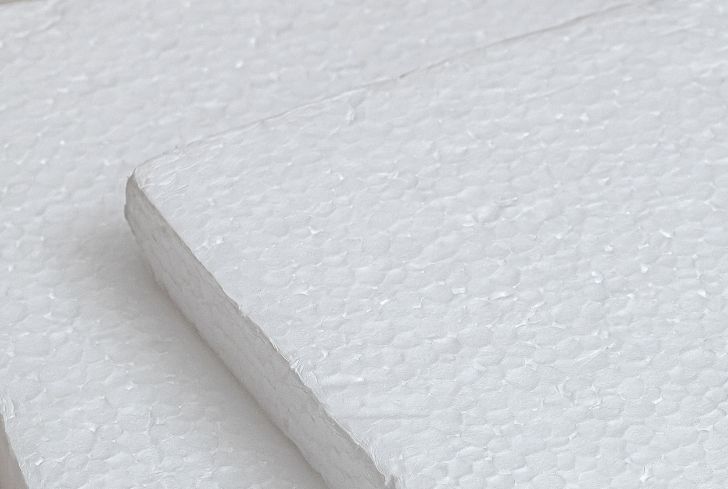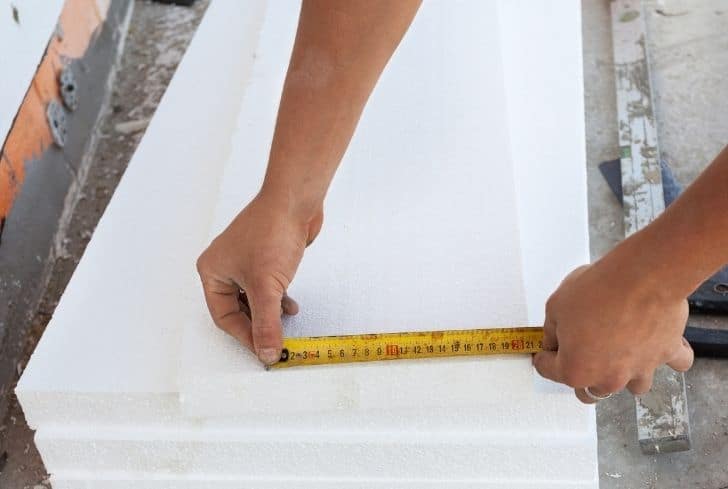Have you heard of Styrofoam? We bet you have. For years, foam products are the go-to for picnic plates and disposable cups, to name a few. Lots of people use these products. As a result, many questions arise from the use of Styrofoam.
First, there is a general confusion about what Styrofoam is. The squeaky white product you know as Styrofoam is not Styrofoam. Styrofoam is an insulation board used in walls, foundations, and roofs of houses. The Dow Chemical Company produces these Styrofoam boards.
Since the use of these Styrofoam boards, many products with similar texture have been called Styrofoam. This term isn’t right. Most foam products come from a polymer material known as polystyrene. Thus, the correct name for the foam you use as coffee cups is “expanded polystyrene foam.”
Producers make these foam products in billions every year. When you use them, they contribute to solid waste. To avoid this, many people consider recycling foam. But is Styrofoam recyclable?
We’ll tell you all about it. Dive in!
Can You Recycle Styrofoam?
One of the most asked questions about Styrofoam is whether it is recyclable. The simple truth is that you can recycle Styrofoam.
However, the process can be challenging. It ISN’T EASY to recycle Styrofoam because it decomposes slowly. Also, Styrofoam does not readily absorb light, and this makes decomposing difficult.
Styrofoam is a number 6 plastic. This rating confirms that the material is hard to recycle. It needs special equipment before recyclers can process it into another product. Many recyclers use condensing machine to process Styrofoam.
Asides cassette tapes, polystyrene products are one of the most challenging elements to recycle. Due to these reasons, many areas do not accept Styrofoam for recycling. Locations that take Styrofoam for processing may reject foam products if food or liquid contaminates it. Foam products are harder to break down if they contain edibles.
If you can’t recycle your Styrofoam, you may re-use it. Otherwise, you could do without it and go for recyclable products.
Is Styrofoam Biodegradable?
A given material is biodegradable if living organisms can decompose it. Most times, only living things and products made from them are biodegradable. For example, trees and paper, dead animals, and sewage are biodegradable.
Biodegradable substances do not stay too long in the environment and thus prevent pollution. However, is Styrofoam biodegradable?
Well, you need to know that the materials used to make Styrofoam are petrochemicals. And they do not usually decompose.
As such, we may conclude that Styrofoam is NOT biodegradable. Even though Styrofoam can undergo natural breaking down, this usually takes between five hundred to a thousand years.
So, you do not want to dispose of Styrofoam just like other biodegradable materials. Instead, you can re-use them or recycle them where doing so is possible.
Is Styrofoam Bad for the Environment?
Styrofoam comes from a plastic polymer. A polymer involves the bonding of different chemical elements. For polystyrene, it contains styrene and benzene. These elements are toxic and can be harmful.
So, to answer the question, Styrofoam is TERRIBLE for the environment. You must be wondering why. Don’t worry; we will tell you about its harmful effects on your health and the environment.
Well, the first health impact of these foams is leaching. Most people use Styrofoam for hot food and drinks. Hot substances can make the foam breakdown and release chemicals into your food or drink. When this happens, it could work untold damage to your health.
Styrofoam is also widely known to be a health hazard. People who live in areas with many polystyrene products have higher chances of coming down with cancer, depression, fatigue, and several health issues.
One of the most significant hazards of Styrofoam is the litter it causes. Styrofoam is everywhere, and disposing of it can be a big problem.
Also, Styrofoam waste ends up in the ocean and causes water pollution. Besides, many sea animals lose their lives to the harmful chemicals it produces. Then, polystyrene can evaporate into the air and cause the ozone layer to deplete because of the chemicals it contains.
Do you think disposing of Styrofoam products in landfills will help? Sadly, they won’t. Styrofoam products are as harmful in landfills as they are anywhere else.
It takes about five hundred years for foams to decompose. During this period, they will merely take up space, especially given the fluffy nature. They can also be spread by the wind, making them in water bodies or public places.
From the preceding, you can see that Styrofoam does more harm than good to our environment. So, while it is relatively cheap, and you will find loads of people using it, it is not the best bet.
Also, remember that it is a type of plastic product gotten from petrochemicals. As such, it has all the characteristics and disadvantages of plastics.
Can You Burn Styrofoam?
So far, you now know that Styrofoam comes with so much harm to the environment. And this is even the case when you decide to dump it in a landfill.
As such, you are considering burning your Styrofoam. This way, it does not end up in your landfills.
However, have you considered if you can burn Styrofoam? Or does burning it comes with any environmental damage? The answer is YES to both questions.
While you can burn Styrofoam, it is NOT ADVISABLE to do so. Burning Styrofoam leads to the release of many toxic substances.
As you already know, Styfrofoam comes from several chemicals that are harmful in themselves. Burning these components may cause the chemicals to form and get released along with the heat.
However, burning small amounts of Styrofoam may not cause much damage. For heat or fire to cause damage to Styrofoam in a way that can harm the environment, the chemicals should burn in large amounts or for an extended period. Without this, toxic chemicals will not go into the air in large quantities.
Similarly, burning Styrofoam in a campfire or with trash will not produce enough heat to make harmful chemicals escape. The problem with this method of burning Styrofoam, though, is that the fire may grow hotter than anticipated and cause environmental damage.
Also, you can burn Styrofoam in a highly controlled environment. Burning Styrofoam as a method of refuse disposal will require high temperatures. If this takes place in a secure incinerator, toxic substances may not escape into the environment.
If you do not follow these methods when burning Styrofoam, it will cause harm to the environment. And this is due to the harmful chemicals it releases.
Typically, improperly burning Styrofoam can cause the release of styrene, hydrocarbons, and carbon monoxide. And these chemicals cause fatigue, eye defects, organ damage, and emotional problems when released.
So, you want to avoid burning Styrofoam the wrong way.
Is Styrofoam Worse Than Plastic?
Even though Styrofoam is a type of plastic material, it is not the same as plastic. There are many instances in which people use plastic as alternatives to Styrofoam materials. One good example is in making cups and food containers.
Seeing that Styrofoam and plastic are alternatives, there are questions as to which material is worse. Answering this question depends on why you are comparing both materials. So, here is what you need to know.
Generally, Styrofoam is MORE HARMFUL than plastic to the environment. Even though both materials tend to litter the ground, Styrofoam is quite worse.
Styrofoam is tough to recycle, meaning many people have to dispose of it in landfills. More so, Styrofoam does not decompose quickly, which means it stays as trash for a long time. Plastic products, on the other hand, can be recycled, even though they also do not decompose.
However, with recycling, it is possible to transform plastic into many other useful products. That way, it won’t remain a litter for long. Plastic is also cheaper to produce and recycle, unlike Styrofoam.
What Can You Do with Styrofoam (Alternative Uses)?
Given the dangers of Styrofoam and the difficulty of burning and recycling it, what should you do with your waste Styrofoam? Here, we have listed a few alternative ways in which you can use your Styrofoam.
1. Glue
It is possible to make glue from polystyrene. To do that, you can cut your Styrofoam into smaller pieces and put them in a jar. Add orange oil to melt the Styrofoam in the container. Mix, and your glue is ready.
2. Stuffing
You can shred your Styrofoam into peanuts or use ready-made Styrofoam peanuts. You can stuff these Styrofoam peanuts into pillows, beanbag chairs, and plush toys.
3. Packing peanuts
You can re-use Styrofoam packing peanuts whenever you send a parcel, or you can donate them to a shipping agency.
4. Filling plant pots
You may also use Styrofoam peanuts as an addition to soil. Instead of planting with your entire pot filled with earth, you may fill the bottom with Styrofoam peanuts before adding soil. These peanuts will aid the drainage of your plant.
5. Styrofoam Lanterns
You can make lanterns from your Styrofoam cup. String a light bulb in the cup, place it face down and cover with a Styrofoam plate.
6. Shoe Padding
Styrofoam can make good shoe sole pads. Cut a flat piece of Styrofoam that fits into your shoe. Fix into your shoe and wear comfortably.
7. Sound Amplifier
It is easy to make a sound amplifier for your phone using Styrofoam cups. Trace your phone onto a Styrofoam cup and cut the shape you traced. Slide your phone into the cut space with your speaker facing out.
8. Loose Screw Tightener
If you have a loose screw, you can fit in a Styrofoam peanut into the screw hole. Tighten the screw and watch the Styrofoam take up the open space in your screw.
9. Ice Cooling
If you would like to make the things in your cooler remain cold without ice, you can put packing peanuts into the cooler. Packing peanuts will make the contents remain cold for long without melting.
10. Seedling Starters
Seedling starters are necessary for your seeds to grow well before you move them. Styrofoam cups can be perfect seedling starters.
11. Color palette
You can use a Styrofoam tray to mix your paint. It is also possible to wash the palette and re-use it as often as you want.
12. Stage Props
Stage acting just got more comfortable with Styrofoam. Instead of buying materials as stage props, you can cut the materials you need into objects you need. Also, since Styrofoam is light, you can quickly move your stage props.
Final Words
Styrofoam can put the environment in danger with its many harmful effects. It would be best if you considered using alternatives to Styrofoam like glass or recyclable plastic.
But you shouldn’t worry if you have Styrofoam already. We already told you how to use it. With these points, you’ll better enjoy using your Styrofoam without causing damage.
References:
‘https://businessbarbados.com/trending/green-business/the-dangers-of-polystyrene/







